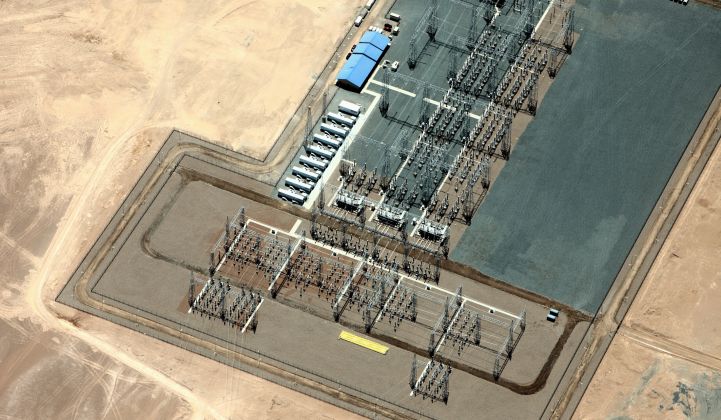While some investors and entrepreneurs argue that the energy storage market needs a savior technology, AES has already deployed a significant amount of economically viable utility-scale storage resources.
AES Storage Solutions took some time out of its busy energy-storage deployment activity to blow its own horn, announce a milestone, and speak a bit about grid-scale storage.
The battery-based energy storage developer has a fleet of 174 megawatts of controllable resources with six years of service data and has just surpassed 1.5 million megawatt-hours of delivered service in the U.S. and Chile.
Chris Shelton, the president of AES Energy Storage, defended his firm's uncharacteristic burst of braggadocio: "It's important to mark these milestones, because utility customers and stakeholders are interested in technologies and the scale of these services. They want to hear about reliability and time in the ground."
"What's nice about batteries is that they can have multiple personalities," said Shelton. "The technological underpinnings that deliver capacity relief in Chile are almost identical to what's happening at Laurel Mountain, [where storage] is performing frequency regulation at a wind farm," he observed.
Shelton continued: "Our fleet at PJM, with the new 40-megawatt Tait facility, totals 100 megawatts of resource...serving up to 10 percent of the regulation of PJM in some hours." Beacon Power, a flywheel energy storage provider, has 20 megawatts in PJM.
During its energy storage deployment efforts, AES has worked with PJM Interconnection, New York ISO, ERCOT, California ISO, Indianapolis Power & Light, Dayton Power & Light, PECO, Southern California Edison, CenterPoint, and NYSEG.
“These battery arrays continually serve and compete with traditional resources in market systems in the U.S. and Chile," said John Zahurancik, VP of Commercial Development at AES Energy Storage, in a statement.
As we've reported, large grid-scale energy storage has moved from its demonstration and pilot program phase to its early commercialization phase.
Last June, the PUC asked California's big three investor-owned utilities to procure 1.3 gigawatts of energy storage by 2020, along with setting market mechanisms to launch the procurement process. The recent 50-megawatt Southern California Edison Los Angeles Basin Energy Storage RFQ reveals a California utility industry getting its head around deploying big energy storage. The Imperial Irrigation District, a municipal utility in the southeastern part of California's desert, also just took a step toward deploying energy storage.
AES claims to have over 1,000 megawatts of energy storage in development. AES Energy Storage's parent company, AES, had 2012 revenues of $18 billion, as well as $42 billion in total assets.
***
GTM Research’s recent report, Grid-Scale Energy Storage in North America 2013: Applications, Technologies and Suppliers, pinpoints the most promising energy storage applications, geographic markets and market segments and profiles over 150 companies active in the North American storage industry, including 25 that are particularly well positioned to succeed. More details are available here.



